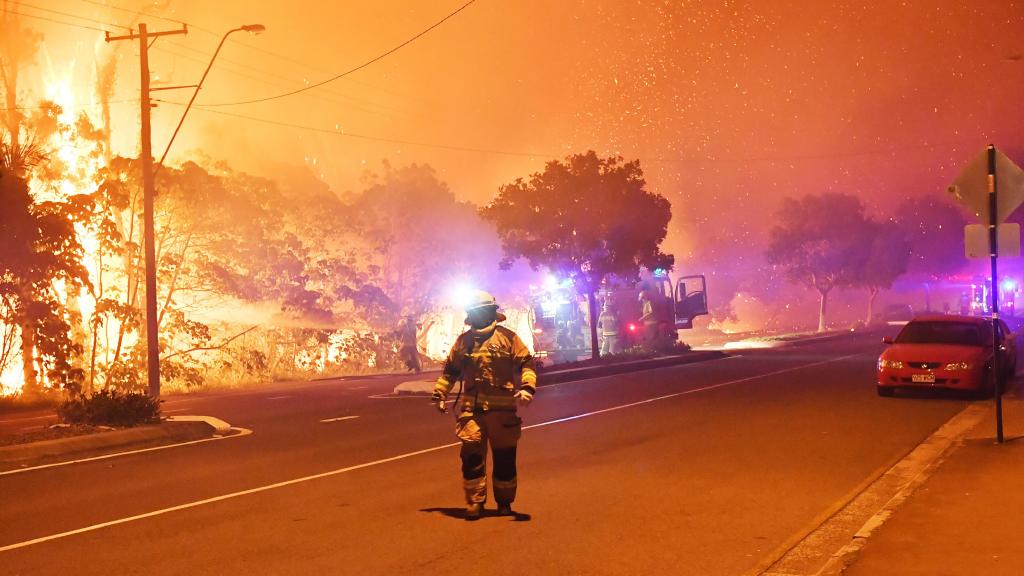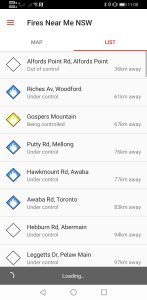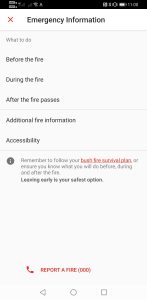We all know that the Australian summer can be hot, unpleasant and outright dangerous, but we’re not even in summer yet and already the most dangerous fire rating is upon us in New South Wales.
Unless you’ve been living in a cave, you’d have heard of the NSW RFS declaring today to be a “catastrophic” fire risk, the first time the extreme danger rating has actually been used since introduced. While there aren’t fires threatening Sydney at the time of writing the worsening conditions could quickly change that, and there’s some horrific fires burning on the NSW mid-north coast.
It’s easy to become overwhelmed with the news coverage of what’s happened, and the forecasts of what may be to come, but there’s some simple tips you can follow to stay up to date, stay safe and manage the flow of information.
Stay up to date with the NSW RFS
As the combat agency for bushfires across the state, the NSW RFS is your number one source of information on what’s happening out there. There are some key resources you can monitor to keep an eye on what’s happening around you:
- NSW RFS website is a good place to start
- A guide on how to plan and prepare for a bushfire emergency
- Live updates are posted by NSW RFS to its Twitter and Facebook feeds
You can also install the NSW RFS’ Fires near me app, which not only gives you real-time information on fires reported across NSW, but you can also set up watch zones to be immediately notified should a fire be reported in areas you care about – e.g. around your home, office, children’s schools, etc.
I’m using this on my phone – as I have the last few years – but the addition of the new Watch Zones feature is a really welcome one – if anything happens that I need to know about, there’ll be a notification on my phone and my watch. Handy to know.
You can also download it on the Apple iOS App Store here.
Stay Safe
If you’re in a bushfire prone zone – as we are – then you’ll probably be on edge today. I can hear the wind rushing and I’m not enjoying that, even though there’s nothing much happening around here as I write this.
However, there’s some simple things you can do – perhaps busy yourself with – to make sure you’re safe now, and that you will be safe later if your situation changes.
Make sure you have a Fire Plan. I’d argue perhaps its a bit late, but it’s better late than never. The NSW RFS has a fantastic resource for putting together a bush fire safety plan, but some of the things you should think about are:
- Preparing your home. Keep the gardens maintained, grass low, and remove dead branches, leaves and the like. Don’t keep flammable items e.g. wooden structures, furniture, etc. too close to your house. Clear out the gutters, and prune any vegetation too close to your house if possible.
- Prepare yourself. Make sure your home is insured, and have a list of your contents. Make sure you’ve got any irreplaceable items readily accessible, or better yet, keep them next to the front door in case you need to go quickly. Depending on the level of risk and where you are, it may be prudent to load these things into the car anyway, or if you’re right on bushland, take your irreplaceable things somewhere else that’s safer.
- Have your essentials ready. If you do need to go, you’ll want to have things with you that you can’t do without. You might like to think about things like passports, medication, spare batteries for radios and mobile phones, laptops, and a couple of useful cables. Think about what you might need if you’re kept from your home for a bit – packing some clothes for yourself and your kids isn’t a bad idea, even if it’s only a couple of days worth.
- Prepare to leave. The advice of the RFS is that if you’re in a bushfire prone area, you probably shouldn’t be. Safer places are those like shopping centres, town centres, places away from bushland where fire isn’t likely to impact. If you’re not leaving immediately – noting that you aren’t required to evacuate at the time of writing – it would be prudent to be ready to go fairly quickly should the need arise.
Managing the flow of information
Periods of fire danger can be overwhelming – regular updates from the RFS, bulletins on the radio, TV and online … there can be a huge flow of information and not all of it may be helpful to you.
In fact, too much information could become quite overwhelming. I know my anxiety isn’t having a great day.
Authorities recommend keeping an eye on the NSW RFS app, and having a radio handy in case you need to tune in to emergency broadcasts. Fortunately, for those of us who drive, a radio isn’t too hard to come by, but if you don’t (or don’t have a car), a cheap radio can be found at places like Officeworks, Kmart, Target, or even the supermarket. A great idea to keep in your bag – with batteries that work – just in case you need it.
Stay safe out there folks.







